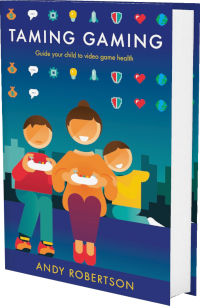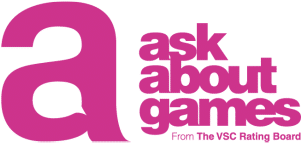 Android
Android iOS
iOS Mac
Mac Switch
Switch Wii
Wii Wii U
Wii U PC
PC PS4
PS4 PS5
PS5 Xbox One
Xbox One Xbox X|S
Xbox X|SWe've documented 23 accessibility features for The Magic Labyrinth, including Playable Without Hearing, Audio Cues Mirrored Visually (Or no critical audio signals), No Close Inspection Disadvantage, Easily Verbalised Game State and No Busy Backgrounds. Its accessibility is strongest in Physical and Difficulty but it also has features in Visual, Getting Started, Reading and Audio to reduce unintended barriers.
This report is created with input from accessibility experts and the player community to help people find games that have the accessibility features they require. Once you have found potential games on the database, there are excellent specialist accessibility sites that offer in-depth reviews to guide your purchasing decisions.
Our accessibility examiner, Andy Robertson, first checked The Magic Labyrinth accessibility 24 months ago. It was re-examined by Andy Robertson and updated 24 months ago.
 Accessibility Notes
Accessibility Notes
Although players without hearing will not hear when their ball drops off, they can feel this by placing a hand against the base. The ball also appears at the corner of the maze after it has fallen off.
Symbols are coded by different icons but these are all the same blue colour and although the contrast is not high with the background there is a white glow behind each of them to accentuate the contrast.
 Game Details
Game Details
Release Date: 01/01/2009
Skill Rating: 4+ year-olds
Players: 2-4
Genres: Brain Game, Traversal (Collecting, Push-Your-Luck, Race and Sequencing)
Accessibility: 23 features
Components: Bag, Board, Figures and Tokens
Costs: Purchase cost
 Difficulty
Difficulty
We've documented 4 accessibility features for Difficulty in The Magic Labyrinth which deal with how you can adjust the challenge of play.
Difficulty Options
Simple and Full Version: Game provides layered rules to enable the removal of elements for a simpler version of the game. Ideally, these are given non-stigmatising descriptors for example, "simple/complex" rather than "novice/expert".
No Deceit Advantage: No game mechanic where players need to deceive each other to progress. This includes bluffing and lying.
No Colour Advantage: Game can be played without colour-blindness being a barrier to performance.
No Weighing Decisions: Game can be played effectively without weighing probability or choosing between competing consequences.
 Getting Started
Getting Started
We've documented 3 accessibility features for Getting Started in The Magic Labyrinth which deal with what support is offered to get started with the game.
Assistance Progressing
These features aid your progress through the game offering different ways of managing your pieces and progression.
Play Order Tokens (Or play order doesn’t change): Where player order impacts the game or there are multiple play phases the game provides a means of keeping track of this. Includes provision of play order tokens or use of piece/board orientation.
Reaction-Time Not Critical: Individual game actions don’t need quick reactions. This means you don't need to quickly respond to events in the game or other players.
Low Pressure: Decisions aren’t time-limited so you can take your time with each action.
 Reading
Reading
We've documented 2 accessibility features for Reading in The Magic Labyrinth which deal with how much reading or listening comprehension is required, how well the game provides accessible text.
Reading Level
How much reading is required to play the game and how complex the language is.
No Text: No text or numbers in the game at all. This means the game is language independent.
Necessary Text Visibility
How clear are the required text or numbers to play the game.
Clear Icons: Icons are used to simply communicate and highlight important graphical elements related to gameplay. This assumes good contrast and generally familiar symbols.
 Physical
Physical
We've documented 8 accessibility features for Physical in The Magic Labyrinth which deal with how you interact with the game components and how accommodating these are of different requirements.
Pieces
How the game components accommodate interactions through touch, shape, texture and colour.
Components are Replaceable: Game components can be replaced with alternatives that meet an accessibility requirement, that don’t conflict with game mechanics (needing to pick randomly from a bag) or another physical aspect of the game (board indentations).
No Non-Standard Dice (Or No Dice): The game uses standard numerical dice, doesn’t need dice to play or ensures dice are readable by touch.
No Tiny Pieces: Game pieces are not very small. This doesn't cover cards. The target size for this is not less than 20mm wide and not less than 2mm thick.
No Paper Money: The game doesn’t use paper money.
No Sprawl: You can play the game on a small surface (train table or hospital bed table) of approximately 1/2 meter square. Or you can manage this in a small space easily.
Placement
How the game assists interaction, manipulation, management and placement of game pieces.
Player Components Not Shared: Key components are not shared so you can organise them as best suits your needs. Keeping them close to you. Organising them in useful groupings.
No Fiddly Placement: No movement or manipulation of small pieces or cards in limited space on a board or other location.
Easily Verbalised Actions: The game is clearly labelled (landmarks, coordinates and so on) to make it possible to unambiguously describe game actions and relate those to the board or other pieces. This is useful for players who need others to move their pieces.
 Visual
Visual
We've documented 4 accessibility features for Visual in The Magic Labyrinth which deal with how well the game offers visual clarity and adjustments to accommodate visual needs.
Printed Visibility
How well the art on (and design of) components support a range of visual needs.
Colour Blind Friendly Design: Game prioritises the use of colour blind friendly palettes. This eases distinguishing elements of the game where colour is used. Ensure colour blind supporting graphics can be easily described or verbalised.
Component Identifiability
How easy it is to see and identify the components you need to work with to play the game.
No Busy Backgrounds: Game board or cards have a simple or monochrome design to aid in identifying game elements when observed in play on top of the board.
Easily Verbalised Game State: Other players can describe the state of both their playing area and shared areas for players unable to see them. The verbalised game state is not too complexed to memorise.
No Close Inspection Disadvantage: If necessary, players can inspect similar pieces to distinguish them without time limit or risk of leaking gameplay intention.
 Audio
Audio
We've documented 2 accessibility features for Audio in The Magic Labyrinth which deal with how the game supports player communication to meet a range of requirements.
Communication
How the game accommodates different styles of communication, particularly non-verbal.
Audio Cues Mirrored Visually (Or no critical audio signals): Where audio cues (soundtrack, player utterances and shouts) are critical for play, there are visual equivalents to ensure players with hearing impairments aren’t disadvantaged as a result of the loss of incidental sound.
Playable Without Hearing: You can play the game without the need to hear other players or sound made by game elements. Where other communication channels can be used if you have a supportive set of players, this is only included if communication can be low pressure.
Accessibility Report supported by VSC Rating Board, PlayabilityInitiative and accessibility contributors Andy Robertson












